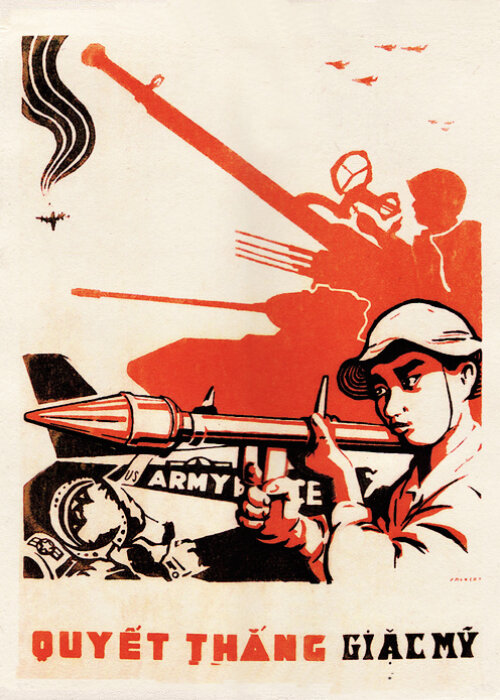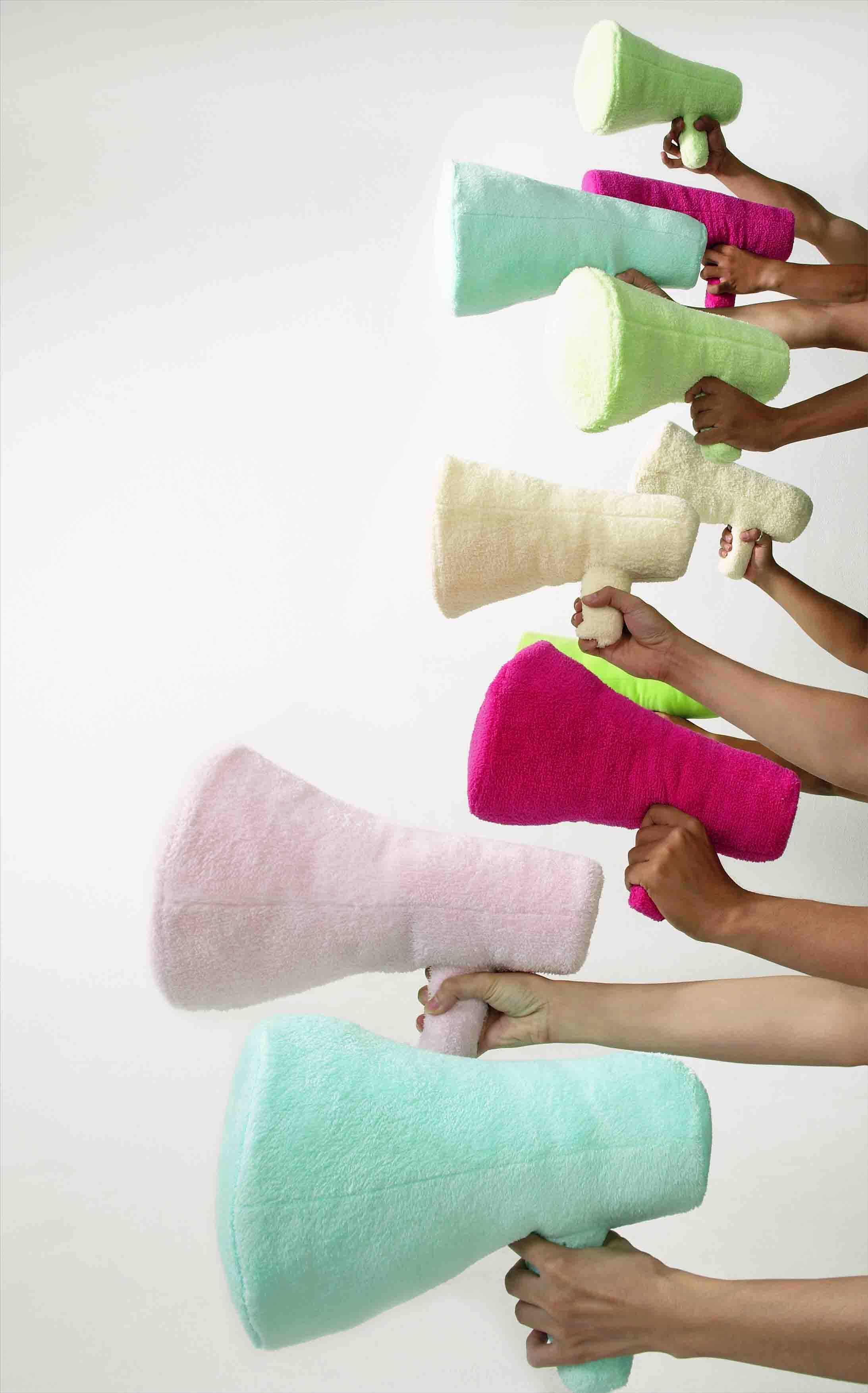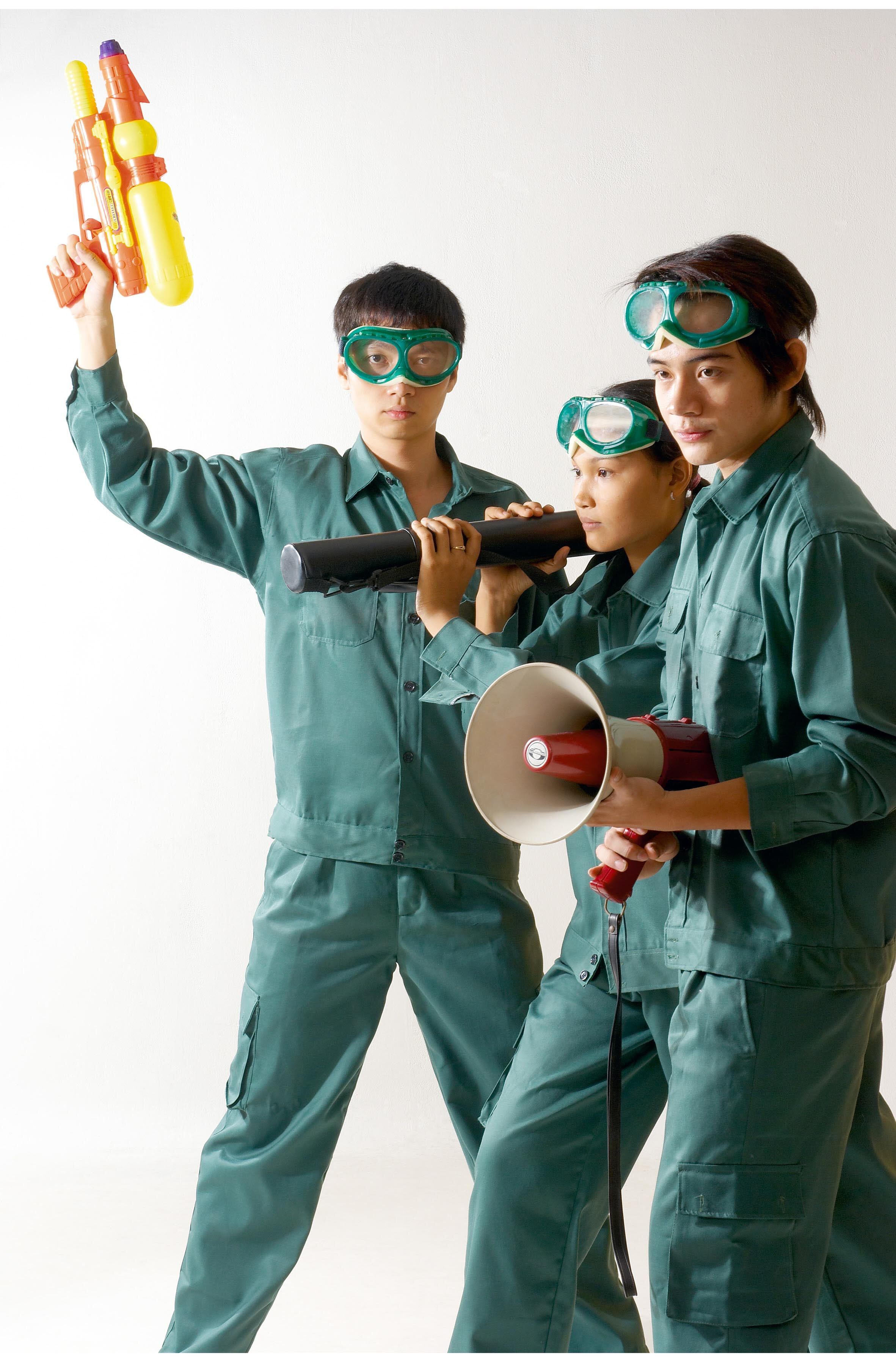Playing with Propaganda
Three characters in the frame. Two of them wear an orange uniform while the other puts on the blue version of the same outfit. All of them resemble blue-collar workers. The first, his back against the camera and head tilted, holds a black plastic blueprint tube, angled upward. The second, the one in blue uniform, kneels in a karate pose whilst gripping a megaphone. The third, lying on the floor with a propped elbow, raises his arm with a yellow plastic ball around his palm and a water gun in his right hand. They are not dressed up for a convention. They are portraying roles from historical posters. They are Tiffany Chung’s body of work.
The image titles Play Tough Aim High. The characters are recreating the propaganda posters of the Vietnam War under Chung’s discretion. Politics and youth pervade Play, a series of photographs that cuts through the pop-culture obsession of the present Vietnam and the history of North Vietnam’s indoctrination. Censorship from the government tails Chung's artistic undertakings; she navigates this using sarcastic pop, dripping her anthology in irony. She placates the country's figureheads and leaders whilst appealing to the eyes and ruminations of the general public and its art enthusiasts.
Tiffany Chung, Play Tough Aim High, 2008
Before exhibiting the 2008 series at her solo show in Tyler Rollins Fine Art, the Texas based artist had acknowledged the duality of the youth in safekeeping their personal affairs over their political expressions. “Cosplay happens to be a perfect medium that allows the Vietnamese youth the freedom of being individual and having alternate personas momentarily, bringing social norms into question. Although these teenagers cannot quite articulate their thinking and actions, this is certainly revolutionary in a society where critical thinking has not been exactly encouraged,” Viet Le writes for Tyler Rollins Fine Art.
Resolve To Win US Invaders, hand-painted on rice paper. Courtesy of vietnampropaganda.com
In the Vietnamese propaganda posters distributed during the Vietnam War of 1954 - 1973, a soldier, donning a bucket hat, shoulders a bazooka while a military tank behind him fires at the Americans’ aircraft. A duo in pink and blue holds a bouquet of pink flowers in their raised hand while an armalite slings around the man’s neck and the woman raises a rifle with her other hand. Two soldiers in red are running towards the war, ready with machine guns and military tanks in tow.
In Chung’s interpretation, blue-collar workers in street-sweeper uniforms wear swimming goggles while holding a plastic tube for blueprints, a water gun, and a megaphone in We Rock. Ten megaphone-shaped pastel-coloured cushions point at the invisible enemies in All Work Can Play, the depiction of Vietnam’s national anthem being played across cities during the war. Be There or Be Square shows four figures in construction-worker uniforms and on-site helmets assaulting their enemies with pool sticks, a mesh of Vietnam’s pastime and its violent history.
In Chung’s work, cosplay is the identity of history. Fictional roles of pop culture conceal the bloodbath of the Vietnam War. It is playful and introspective, to scrutinise the underlying imagery is the key to understand her body of work, but never deceptive. Cosplay is no longer a pastime and vocation at comic, anime or book conventions, but a medium to hurl a reminiscent of a crucial past to the forefront, and this time, Tiffany Chung helms the revolution.
Words: Matthew Burgos





